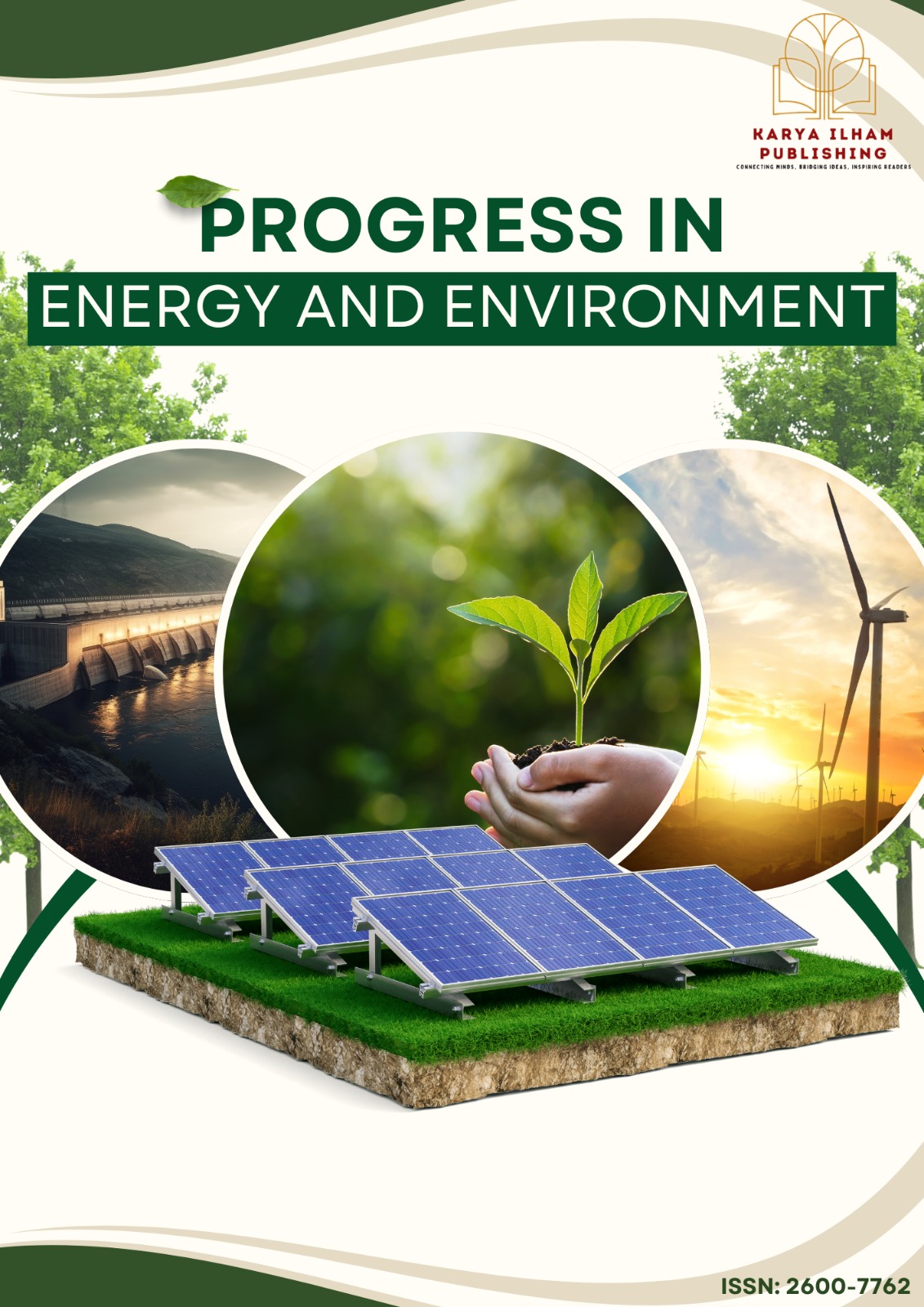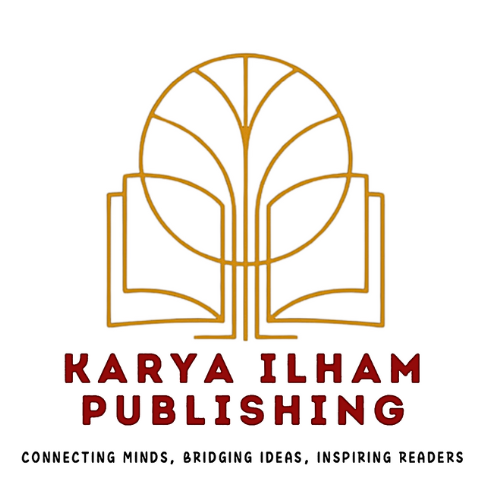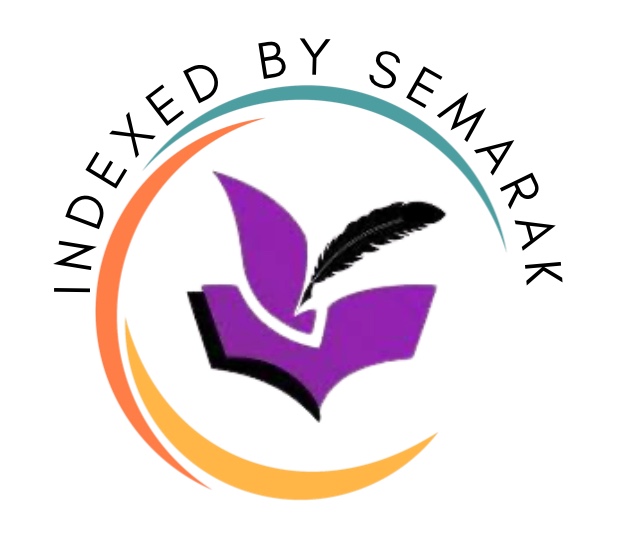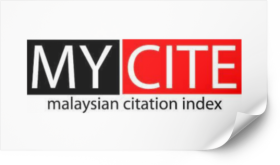Conceptual Framework for Assessing the Impact of Green Design Strategies on High-Rise Building Performance in Regions Characterised by Heat and High Humidity
Keywords:
Green Design, High-rise Building, Hot and Humid Weather, Criteria, AlternativesAbstract
Green design focuses on creating buildings that enhance human health and minimise environmental impacts. In Malaysia, especially in urban areas, there is growing attention to green building strategies for high-rise structures. However, the nation’s tropical climate, characterised by heat and high humidity, poses significant challenges for these sustainable practices. The science and methodologies behind green design are still developing, and successful implementation faces several obstacles, including limited knowledge among stakeholders such as consultants and contractors. This study aims to assess the performance of green design strategies for high-rise buildings in Malaysia’s hot and humid environment. It seeks to establish criteria for evaluating green designs under these climatic conditions and proposes alternatives to improve current practices. Environmental and economic performance are major concerns, as some buildings with green certifications do not always deliver expected outcomes due to execution gaps. By evaluating the efficiency, sustainability, and safety of green features in high-rise buildings, the research intends to facilitate the evolution of Malaysia’s construction sector toward more sustainable and environmentally friendly practices. The ultimate goal is to promote healthier and more productive living spaces, reduce greenhouse gas emissions, improve air quality, and conserve natural resources, thus supporting a sustainable future for the built environment in regions facing similar climatic challenges.
References
[1] S. Harris, G. Ryan, M. Marino, and K. Gharehbaghi, The Green Design of High-Rise Buildings: How is the Construction Industry Evolving. Technological Sustainability 2 (2022) 89–99. https://doi.org/10.1108/techs-04-2022-0017.
[2] A. Ragheb, H. El-Shimy, and G. Ragheb, Green Architecture: A Concept of Sustainability. Procedia – Social and Behavioral Sciences 216 (2016) 778–787. https://doi.org/10.1016/j.sbspro.2015.12.075.
[3] R. Valentini, J.L. Sievenpiper, M. Antonelli, and K. Dembska, Achieving the Sustainable Development Goals through Sustainable Food Systems, Springer Nature, 2019.
[4] C.L. Cheng, J.J. Peng, M.C. Ho, W.J. Liao, and S.J. Chern, Evaluation of Water Efficiency in Green Building in Taiwan. Water 8 (2016) 236. https://doi.org/10.3390/w8060236.
[5] N. Frederiksen, L. Fredslund, and S.C. Gottlieb, The Hybridity of Strategic Partnerships and Construction Supply chain Management, in: Emerald Reach Proceedings Series, 2019: pp. 77–83. https://doi.org/10.1108/s2516-285320190000002029.
[6] S. Evjen, G. Gunnerud, O. Lædre, R. Søfting, and J. Lohne, Sub-Contractors’ perception of contracting: the case of crime, in: Emerald Reach Proceedings Series, 2019: pp. 59–67. https://doi.org/10.1108/s2516-285320190000002059.
[7] L.N. Dwaikat, and K.N. Ali, Green Buildings Cost Premium: A Review of Empirical Evidence. Energy and Buildings 110 (2015) 396–403. https://doi.org/10.1016/j.enbuild.2015.11.021.
[8] R.J. Yang, P.X.W. Zou, and J. Wang, Modelling Stakeholder-Associated Risk Networks in Green Building Projects. International Journal of Project Management 34 (2015) 66–81. https://doi.org/10.1016/j.ijproman.2015.09.010.
[9] F.S. Hafez, B. Sa’di, M. Safa-Gamal, Y.H. Taufiq-Yap, M. Alrifaey, M. Seyedmahmoudian, A. Stojcevski, B. Horan, and S. Mekhilef, Energy Efficiency in Sustainable Buildings: A Systematic Review with Taxonomy, Challenges, Motivations, Methodological Aspects, Recommendations, and Pathways for Future Research. Energy Strategy Reviews 45 (2022) 101013. https://doi.org/10.1016/j.esr.2022.101013.
[10] Z. Yas, and K. Jaafer, Factors Influencing the Spread of Green Building Projects in the UAE. Journal of Building Engineering 27 (2019) 100894. https://doi.org/10.1016/j.jobe.2019.100894.
[11] L. Zheng, Research on the Application of Green Building in Building Design. IOP Conference Series Earth and Environmental Science 783 (2021) 012160. https://doi.org/10.1088/1755-1315/783/1/012160.
[12] Y. Li, L. Yang, B. He, and D. Zhao, Green building in China: Needs great Promotion. Sustainable Cities and Society 11 (2013) 1–6. https://doi.org/10.1016/j.scs.2013.10.002.
[13] C.S. Singh, Green Construction: Analysis on Green and Sustainable Building Techniques. Civil Engineering Research Journal 4 (2018). https://doi.org/10.19080/cerj.2018.04.555638.
[14] A.P.C. Chan, A. Darko, and E.E. Ameyaw, Strategies for Promoting Green Building Technologies adoption in the Construction Industry—An International Study. Sustainability 9 (2017) 969. https://doi.org/10.3390/su9060969.
[15] R. Ries, M.M. Bilec, N.M. Gokhan, and K.L. Needy, The Economic Benefits of Green Buildings: A Comprehensive Case Study. The Engineering Economist 51 (2006) 259–295. https://doi.org/10.1080/00137910600865469.
[16] F.E.M. Ghazali, R. Zakaria, E. Aminudin, L.Y. Siang, G. Alqaifi, D.N. Abas, N.I. Abidin, and S.M. Shamsuddin, The Priority Importance of Economic Motivation Factors against Risks for Green Building Development in Malaysia. MATEC Web of Conferences 138 (2017) 02011. https://doi.org/10.1051/matecconf/201713802011.
[17] C. Alalouch, M.S.-E. Saleh, and S. Al-Saadi, Energy-Efficient House in the GCC Region. Procedia – Social and Behavioral Sciences 216 (2016) 736–743. https://doi.org/10.1016/j.sbspro.2015.12.071.
[18] C.F. Yiing, N.M. Yaacob, and H. Hussein, Achieving Sustainable Development: Accessibility of Green Buildings in Malaysia. Procedia – Social and Behavioral Sciences 101 (2013) 120–129. https://doi.org/10.1016/j.sbspro.2013.07.185.
[19] Oindrila Das, Water Conservation Aspects of Green Buildings. International Journal of Research in Engineering and Technology 04 (2015) 75–79. https://doi.org/10.15623/ijret.2015.0425012.
[20] R.C. Nnaemeka-Okeke, and F.O. Okeke, Assessing the Influence of Seasonal Precipitation Patterns on Groundwater Quality in the Coal Rich Environment of Enugu, Nigeria. Discover Applied Sciences 6 (2024) 208. https://doi.org/10.1007/s42452-024-05837-x.
[21] T. Anantika, Application of Green Building Concept (Rainwater harvesting) at Menara Cibinong Apartment. Journal of Architectural Research and Education 1 (2020) 147. https://doi.org/10.17509/jare.v1i2.22306.
[22] Y.A. Horr, M. Arif, M. Katafygiotou, A. Mazroei, A. Kaushik, and E. Elsarrag, Impact of Indoor Environmental Quality on Occupant Well-Being and Comfort: A Review of the Literature. International Journal of Sustainable Built Environment 5 (2016) 1–11. https://doi.org/10.1016/j.ijsbe.2016.03.006.
[23] H. Karimi, M.A. Adibhesami, H. Bazazzadeh, and S. Movafagh, Green Buildings: Human-Centered and Energy Efficiency Optimization Strategies. Energies 16 (2023) 3681. https://doi.org/10.3390/en16093681.
[24] A. Ghaffarianhoseini, H. AlWaer, H. Omrany, A. Ghaffarianhoseini, C. Alalouch, D. Clements-Croome, and J. Tookey, Sick Building Syndrome: Are We Doing Enough? Architectural Science Review 61 (2018) 99–121. https://doi.org/10.1080/00038628.2018.1461060.
[25] U. Satish, M.J. Mendell, K. Shekhar, T. Hotchi, D. Sullivan, S. Streufert, and W.J. Fisk, Is CO2 an Indoor Pollutant? Direct Effects of Low-to-Moderate CO2 Concentrations on Human Decision-Making Performance. Environmental Health Perspectives 120 (2012) 1671–1677. https://doi.org/10.1289/ehp.1104789.
[26] M.A.O. Mydin, Drywall Thermal Properties Exposed to High Temperatures and Fire Condition. Jurnal Teknologi 62 (2013). https://doi.org/10.11113/jt.v62.1369.
[27] N.S.S. Suhaili, N.M.A.O. Mydin, and N.H. Awang, Influence of Mesocarp Fibre Inclusion on Thermal Properties of Foamed Concrete. Journal of Advanced Research in Fluid Mechanics and Thermal Sciences 87 (2021) 1–11. https://doi.org/10.37934/arfmts.87.1.111.
[28] M.A.O. Mydin, M.F.M. Shajahan, S. Ganesan, and N.Md. Sani, Laboratory Investigation on Compressive Strength and Micro-structural Features of Foamed Concrete with Addition of Wood Ash and Silica Fume as a Cement Replacement. MATEC Web of Conferences 17 (2014) 01004. https://doi.org/10.1051/matecconf/20141701004.
[29] M.A.O. Mydin, M. Musa, and A.N.A. Ghani, Fiber Glass Strip Laminates Strengthened Lightweight Foamed Concrete: Performance Index, Failure Modes and Microscopy Analysis. AIP Conference Proceedings 2016 (2018) 020111. https://doi.org/10.1063/1.5055513.
[30] M.A.O. Mydin, N.Md. Noordin, N. Utaberta, M.Y.M. Yunos, and S. Segeranazan, Physical Properties of Foamed Concrete Incorporating Coconut Fibre. Jurnal Teknologi 78 (2016). https://doi.org/10.11113/jt.v78.8250.
[31] M.A.O. Mydin, Modeling of Transient Heat Transfer in Foamed Concrete Slab. Directory of Open Access Journals (2013). https://doaj.org/article/494752dfe026401da3f4f0fc83a60325.
[32] M.A.O. Mydin, Preliminary Studies on the Development of Lime-based Mortar with Added Egg White. International Journal of Technology 8 (2017) 800. https://doi.org/10.14716/ijtech.v8i5.442.
[33] A.M. Maglad, M.A.O. Mydin, S.D. Datta, and B.A. Tayeh, Assessing the Mechanical, Durability, Thermal and Microstructural Properties of Seashell Ash based Lightweight Foamed Concrete. Construction and Building Materials 402 (2023) 133018. https://doi.org/10.1016/j.conbuildmat.2023.133018.
[34] M.A. Tambichik, A.A.A. Samad, N. Mohamad, A.Z.M. Ali, M.A.O. Mydin, M.Z.M. Bosro, and M.A. Iman, Effect of combining Palm Oil Fuel Ash (POFA) and Rice Husk Ash (RHA) as Partial Cement Replacement to the Compressive Strength of Concrete. International Journal of Integrated Engineering, 10 (2018). https://doi.org/10.30880/ijie.2018.10.08.004.
[35] S. Ganesan, M.A.O. Mydin, N.Md. Sani, and A.I.C. Ani, Performance of Polymer Modified Mortar with Different Dosage of Polymeric Modifier. MATEC Web of Conferences, 15 (2014) 01039. https://doi.org/10.1051/matecconf/20141501039.
[36] M. A. O. Mydin, N.S. Sahidun, M.Y.M. Yusof, and N.M. Noordin, Compressive, Flexural and Splitting Tensile Strengths of Lightweight Foamed Concrete with Inclusion of Steel Fibre. Jurnal Teknologi 75 (2015). https://doi.org/10.11113/jt.v75.4962.
[37] E. Serri, M.A. Othuman Mydin, and M.Z. Suleiman, The Influence of Mix Design on Mechanical Properties of Oil Palm Shell Lightweight Concrete. Journal of Materials and Environmental Science 6 (2015) 607–612.
[38] M.A.O. Mydin, Thin-Walled Steel Enclosed Lightweight Foamcrete: A Novel Approach to Fabricate Sandwich Composite. Australian Journal of Basic and Applied Sciences, 5 (2011) 1727–1733.
[39] M.A.O. Mydin, N.M. Sani, and A.F. Phius, Investigation of Industrialised Building System Performance in Comparison to Conventional Construction Method. MATEC Web of Conferences 10 (2014) 04001. https://doi.org/10.1051/matecconf/20141004001.
[40] M.A.O. Mydin, P. Jagadesh, A. Bahrami, A. Dulaimi, Y.O. Özkılıç, M.M.A.B. Abdullah, and R.P. Jaya, Use of Calcium Carbonate Nanoparticles in Production of Nano-Engineered Foamed Concrete. Journal of Materials Research and Technology 26 (2023) 4405–4422. https://doi.org/10.1016/j.jmrt.2023.08.106.
[41] M.A.O. Mydin, N.M. Zamzani, and A.N.A. Ghani, Effect of Alkali-Activated Sodium Hydroxide Treatment of Coconut Fiber on Mechanical Properties of Lightweight Foamed Concrete. AIP Conference Proceedings (2018). https://doi.org/10.1063/1.5055510.
[42] A.M.J. Esruq-Labin, A.I. Che-Ani, N.M. Tawil, M.N.M. Nawi, and M.A.O. Mydin, Criteria for Affordable Housing Performance Measurement: A Review. E3S Web of Conferences 3 (2014) 01003. https://doi.org/10.1051/e3sconf/20140301003.
[43] M.A.O. Mydin, J.C. Khor, and N.Md. Sani, Approaches to Construction Waste Management in Malaysia. MATEC Web of Conferences 17 (2014) 01014. https://doi.org/10.1051/matecconf/20141701014
[44] M. Alyami, M.A.O. Mydin, A.M. Zeyad, S.S. Majeed, and B.A. Tayeh, Influence of Wastepaper Sludge Ash as Partial Cement Replacement on the Properties of Lightweight Foamed Concrete. Journal of Building Engineering 79 (2023) 107893. https://doi.org/10.1016/j.jobe.2023.107893.
[45] M.A.O. Mydin, N.A. Rozlan, N.Md. Sani, and S. Ganesan, Analysis of Micro-Morphology, Thermal Conductivity, Thermal Diffusivity and Specific Heat Capacity of Coconut Fibre Reinforced Foamed Concrete. MATEC Web of Conferences 17 (2014) 01020. https://doi.org/10.1051/matecconf/20141701020.
[46] A.M. Maglad, M.A.O. Mydin, S.S. Majeed, B.A. Tayeh, and S.A. Mostafa, Development of Eco-Friendly Foamed Concrete with Waste Glass Sheet Powder for Mechanical, Thermal, and Durability Properties Enhancement. Journal of Building Engineering 80 (2023) 107974. https://doi.org/10.1016/j.jobe.2023.107974.
[47] M.A.O. Mydin, and N.M. Zamzani, Coconut Fiber Strengthen High Performance Concrete: Young’s Modulus, Ultrasonic Pulse Velocity and Ductility Properties. International Journal of Engineering & Technology 7 (2018) 284. https://doi.org/10.14419/ijet.v7i2.23.11933.
[48] A.M. Maglad, M.A.O. Mydin, R.C. Kaze, I.S. Abbood, and B.A. Tayeh, Synergistic Effect of Waste Gypsum Plasterboard and Fly Ash as Partial Cement Replacement on Fresh-State, Microstructural, Mechanical and Transport Properties of Foamed Concrete. Construction and Building Materials 463 (2025) 140079. https://doi.org/10.1016/j.conbuildmat.2025.140079.
[49] M. Alharthai, M.A.O. Mydin, R.C. Kaze, S.S. Majeed, and B.A. Tayeh, Properties of Ultra Lightweight Foamed Concrete Utilizing Agro Waste Ashes as an Alkaline Activated Material. Journal of Building Engineering 90 (2024) 109347. https://doi.org/10.1016/j.jobe.2024.109347.
[50] M.A.O. Mydin, M.M.A.B. Abdullah, N.H. Sor, R. Omar, A. Dulaimi, P.O. Awoyera, F. Althoey, and A.F. Deifalla, Thermal Conductivity, Microstructure and Hardened Characteristics of Foamed Concrete Composite Reinforced with Raffia Fiber. Journal of Materials Research and Technology 26 (2023) 850–864. https://doi.org/10.1016/j.jmrt.2023.07.225.
[51] M.A.O. Mydin, M.N.M. Nawi, O. Mohamed, and M.W. Sari, Mechanical Properties of Lightweight Foamed Concrete Modified with Magnetite (Fe3O4) Nanoparticles. Materials 15 (2022) 5911. https://doi.org/10.3390/ma15175911.
[52] M. Musa, M. A. O. Mydin, and A.N.A. Ghani, Influence of Oil Palm Empty Fruit Bunch (EFB) Fibre on Drying Shrinkage in Restrained Lightweight Foamed Mortar. International Journal of Innovative Technology and Exploring Engineering 8 (2019) 4533–4538. https://doi.org/10.35940/ijitee.j1080.0881019.
[53] M.A.O. Mydin, S. Ganesan, M.Y.M. Yunos, N. Utaberta, and N.A. Ismail, Structural Behaviour of Coir Fibre-Reinforced Foamed Concrete Wall Panel System. Jurnal Teknologi 78 (2016). https://doi.org/10.11113/jt.v78.8276.
[54] M.A.O. Mydin, N.A. Othman, and N.Md. Sani, A Prospective Study on Building Quality: Relationship between Workmanship Quality and Common Building Defects of Low-cost Construction Projects. MATEC Web of Conferences 17 (2014) 01001. https://doi.org/10.1051/matecconf/20141701001.
[55] S.S. Majeed, M.A.O. Mydin, A. Bahrami, A. Dulaimi, Y.O. Özkılıç, R. Omar, and P. Jagadesh, Development of ultra-Lightweight Foamed Concrete Modified with Silicon Dioxide (SiO2) nanoparticles: Appraisal of Transport, Mechanical, Thermal, and Microstructural Properties. Journal of Materials Research and Technology 30 (2024) 3308–3327. https://doi.org/10.1016/j.jmrt.2024.01.282.
[56] M.A.O. Mydin, N.H. Sor, F. Althoey, Y.O. Özkılıç, M.M.A.B. Abdullah, H.F. Isleem, A.F. Deifalla, and T.A. Tawfik, Performance of Lightweight Foamed Concrete Partially Replacing Cement with Industrial and Agricultural Wastes: Microstructure Characteristics, Thermal Conductivity, and Hardened Properties. Ain Shams Engineering Journal 14 (2023) 102546. https://doi.org/10.1016/j.asej.2023.102546.
[57] M.A.O. Mydin, M.N.M. Nawi, R. Omar, M.A. Khadimallah, and I.M. Ali, R. Deraman, The Use of Inorganic Ferrous–Ferric Oxide Nanoparticles to Improve Fresh and Durability Properties of Foamed Concrete. Chemosphere 317 (2023) 137661. https://doi.org/10.1016/j.chemosphere.2022.137661.
[58] T.S. Jing, M.A.O. Mydin, and N. Utaberta, Appraisal of Moisture Problem of Inheritance Building Envelope Assemblies via Visible and Infrared Thermography Methods. Jurnal Teknologi 75 (2015). https://doi.org/10.11113/jt.v75.4951.
[59] M. A. O. Mydin, Effect of Silica Fume and Wood Ash Additions on Flexural and Splitting Tensile Strength of Lightweight Foamed Concrete. Jurnal Teknologi 74 (2015). https://doi.org/10.11113/jt.v74.3653.
[60] M.A.O. Mydin, M.N.M. Nawi, R.A. Odeh, and A.A. Salameh, Durability Properties of Lightweight Foamed Concrete Reinforced with Lignocellulosic Fibers. Materials 15 (2022) 4259. https://doi.org/10.3390/ma15124259.
[61] A.M. Serudin, M.A.M. Othuman, and A.N.A. Ghani, Effect of Lightweight Foamed Concrete Confinement with Woven Fiberglass Mesh on its Drying Shrinkage. Revista De Ingeniería De ConstruccióN 36 (2021) 21–28. https://doi.org/10.4067/s0718-50732021000100021.
[62] A.M. Serudin, M.A.O. Mydin, and A.N.A. Ghani, Influence of Fibreglass Mesh on Physical Properties of Lightweight Foamcrete. IIUM Engineering Journal 22 (2021) 23–34. https://doi.org/10.31436/iiumej.v22i1.1446.
[63] M.A.O. Mydin, The Effect of Raw Mesocarp Fibre Inclusion on the Durability Properties of Lightweight Foamed Concrete. ASEAN Journal on Science and Technology for Development 38 (2021). https://doi.org/10.29037/ajstd.685.
[64] M.A.O. Mydin, N. Sarpin, R.M. Zainol, R. Odeh, and M.N.M. Nawi, The Impact of Climatological Factors on the Multifaceted and Multisystemic Deficiencies of Building Anatomy. Journal of Advanced Research in Applied Sciences and Engineering Technology 50 (2024) 308–329. https://doi.org/10.37934/araset.50.1.308329.
[65] A. Dulaimi, Q.S. Banyhussan, J. Abdulrazzaq, M.A.O. Mydin, A. Al-Bdairi, and R.R.A. Almuhanna, Effect of Water Content and Degree of Compaction of Clay Subgrade Soil on the Interface Shear Strength using Geogrid. Journal of Advanced Research in Applied Sciences and Engineering Technology (2024) 262–280. https://doi.org/10.37934/araset.52.2.262280.
[66] M.A.O. Mydin, A.I.C. Ani, A. Dulaimi, M.N.M. Nawi, and R. Omar, Assessing the Effects of Insect Attacks on Buildings and Practical Corrective Measures. Journal of Advanced Research in Applied Sciences and Engineering Technology 50 (2024) 1–17. https://doi.org/10.37934/araset.50.1.117.
[67] N.F. Zahari, M.A. Bakar, S.D.M. Wahid,and M.A.O. Mydin, Implementation of Quality Management System for Historical Building Conservation. MATEC Web of Conferences 15 (2014) 01027. https://doi.org/10.1051/matecconf/20141501027.
[68] M.A.O. Mydin, N.H. Ja’afar, N. Norazman, M.A. Zaidi, and M.N.M. Nawi, Appraisal of the Aetiology and Pathology of Soil Settlement-Related Building Defects and Failures. Journal of Advanced Research in Applied Sciences and Engineering Technology 50 (2024) 286–307. https://doi.org/10.37934/araset.50.1.286307.
[69] P. Arokiasamy, M.M.A.B. Abdullah, E. Arifi, N.H. Jamil, M.A.O. Mydin, S.Z.A. Rahim, A.V. Sandu, and S. Ishak, Sustainable Geopolymer Adsorbents Utilizing Silica Fume as a Partial Replacement for Metakaolin in the Removal of Copper Ion from Synthesized Copper Solution. Case Studies in Construction Materials (2024) e04142. https://doi.org/10.1016/j.cscm.2024.e04142.
[70] A.M. Maglad, M.A.O. Mydin, R.C. Kaze, I.S. Abbood, and B.A. Tayeh, Synergistic effect of waste Gypsum Plasterboard and Fly Ash as Partial Cement Replacement on Fresh-State, Microstructural, Mechanical and Transport Properties of Foamed Concrete. Construction and Building Materials 463 (2025) 140079. https://doi.org/10.1016/j.conbuildmat.2025.140079.
[71] S. Shahari, M.F. Ghazli, M.M.A.B. Abdullah, T.C. Lih, M.A.O. Mydin, M.S. Osman, V.T. Le, and M.F.M. Tahir, A Comparative Study on Effects of Fly Ash and Fly Ash based Geopolymer on the Fire and Mechanical Properties of Glass Fibre Reinforced Epoxy Composite. Construction and Building Materials 457 (2024) 139434. https://doi.org/10.1016/j.conbuildmat.2024.139434.
[72] M.A.O. Mydin, P. Jagadesh, A. Bahrami, S.S. Majeed, A. Dulaimi, and R. Omar, Study on Fresh and Hardened State Properties of Eco-Friendly Foamed Concrete Incorporating Waste Soda-Lime Glass. Scientific Reports 14 (2024). https://doi.org/10.1038/s41598-024-69572-4.
[73] A.A. Sattar, M.A.O. Mydin, and M. Shahadat, Developing Innovative Nano-Engineered Lightweight Foamed Concrete Incorporating Iron Oxide (II, III) with Enhanced Mechanical and Transport Properties. Journal of Advanced Research Design 122 (2024) 8–26. https://doi.org/10.37934/ard.122.1.826.
[74] M.A.O. Mydin, Study on the Engineering Properties of Lightweight Foamed Concrete Modified with Palm Stalk Fiber as an Additive. Journal of Advanced Research Design 121 (2024) 11–21. https://doi.org/10.37934/ard.121.1.1121.
[75] M.A.O. Mydin, R. Omar, M.N.M. Nawi, W.N.W. Ismail, and N. Norazman, Identifying and categorizing Building Defects and Failures caused by Overloading. Journal of Advanced Research in Applied Mechanics 122 (2024) 186–204. https://doi.org/10.37934/aram.122.1.186204.
[76] M.A.O. Mydin, The Potential Use of Palm Frond Fibre on the Mechanical Performance of Lightweight Foamed Concrete. Journal of Advanced Research Design 120 (2024) 36–46. https://doi.org/10.37934/ard.120.1.3646.
[77] M.A.O. Mydin, A.I.C. Ani, N.F.A.N. Yahya, N.Y.@ Ya’acob, and M.N.M. Nawi, The Influence of Impact and Explosion as Agents of Defects on the Structural Integrity of Buildings. Journal of Advanced Research in Applied Mechanics 121 (2024) 222–238. https://doi.org/10.37934/aram.121.1.2222380.
[78] A.M. Maglad, M.A.O. Mydin, S.D. Datta, I.S. Abbood, and B.A. Tayeh, Impact of Anionic Surfactant-Based Foaming Agents on the Properties of Lightweight Foamed Concrete. Construction and Building Materials 438 (2024) 137119. https://doi.org/10.1016/j.conbuildmat.2024.137119.
[79] S. Shahari, M.F. Ghazli, M.M.A.B. Abdullah, T.C. Lih, M.A.O. Mydin, M.S. Osman, V.T. Le, and M.F.M. Tahir, A Comparative Study on Effects of Fly Ash and Fly Ash Based Geopolymer on the Fire and Mechanical Properties of Glass Fibre Reinforced Epoxy Composite. Construction and Building Materials 457 (2024) 139434. https://doi.org/10.1016/j.conbuildmat.2024.139434.

Downloads
Published
Issue
Section
License
Copyright (c) 2025 Progress in Energy and Environment

This work is licensed under a Creative Commons Attribution-NonCommercial 4.0 International License.











